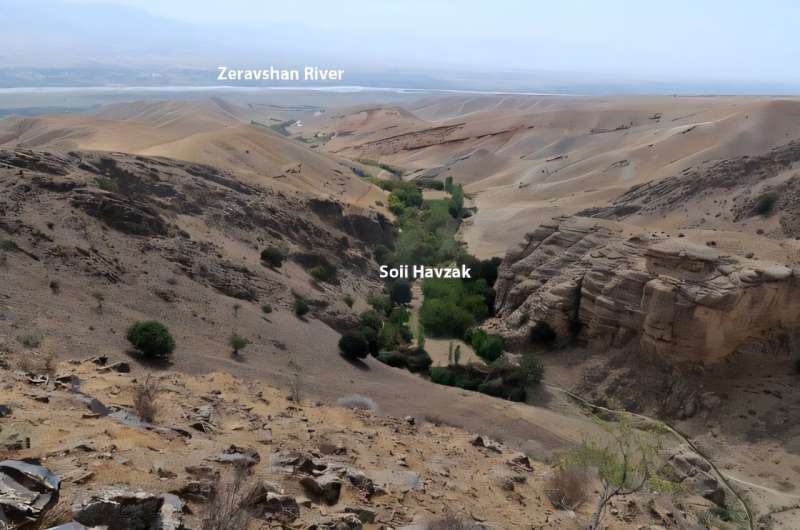In an important discovery, archaeologists from the Hebrew University of Jerusalem and the National Academy of Sciences of Tajikistan have uncovered a multi-layered archaeological site in the Zeravshan Valley, central Tajikistan, shedding rare light on early human settlement in the region. The findings from the site, known as Soii Havzak, provide crucial evidence that Central Asia played a vital role in early human migration and development.
Led by Prof. Yossi Zaidner of the Institute of Archaeology at Hebrew University and Dr. Sharof Kurbanov from the National Academy of Sciences of Tajikistan, the research, published in Antiquity, revealed a rich array of stone tools, animal bones, and ancient vegetation that date back to various periods between 20,000 and 150,000 years ago.
“It turns out that the Zeravshan Valley, known primarily as a Silk Road route in the Middle Ages, was a key route for human expansion long before that—between 20,000 and 150,000 years ago,” explained Prof. Zaidner.
“This region may have served as a migration route for several human species, such as modern Homo sapiens, Neanderthals, or Denisovans, which may have coexisted in this area, and our research aims to uncover who were the humans that inhabited these parts of Central Asia and the nature of their interactions.”
The archaeological team excavated three areas at Soii Havzak, unearthing layers of human activity. The well-preserved remains offer valuable clues to the ancient climate and environment, as well as the potential for discovering human remains that could identify which human species inhabited the region.
-

Stone artifacts from Soii Havzak. Credit: Yossi Zaidner and Team
-

Soii Havzak site during excavations. Credit: Yossi Zaidner
-

Bones and stone artifacts discovered during the excavations at Soii Havzak. Credit: Yossi Zaidner and Team
-

Soii Havzak site during excavations. Credit: Yossi Zaidner and Team
“The preservation of organic materials, such as burnt wood remains, as well as bones, is remarkable. This allows us to reconstruct the region’s ancient climate and provides hope that further excavations might reveal clues about human biology in the region,” said Prof. Zaidner.
“This is crucial for understanding the development of human populations and behavior in Central Asia.”
The research has broader implications for the study of human evolution and migration, particularly in understanding how ancient human groups may have interacted with each other. The team believes that Soii Havzak location in the mountainous corridor of Central Asia may have served as a significant transition point for human populations, enabling the spread of early humans across vast regions.
“We hope that ongoing research at this site will reveal new insights into how different human groups—like modern humans, Neanderthals and Denisovans—may have interacted in this region,” said Prof. Zaidner.
“This discovery is a significant step toward understanding ancient human history in Central Asia and marks an important collaboration between international scientific teams.”
The excavation at Soii Havzak will continue over the coming years, with further digs planned to explore deeper layers and conduct more in-depth analyses of the findings. The research is expected to deepen our understanding of human development in Central Asia, potentially transforming the historical narrative of human migration and interaction in this critical region.
More information:
Yossi Zaidner et al, Soii Havzak: a new Palaeolithic sequence in Zeravshan Valley, central Tajikistan, Antiquity (2024). DOI: 10.15184/aqy.2024.149
Provided by
Hebrew University of Jerusalem
Citation:
Multi-layered site in Tajikistan’s Zeravshan Valley uncovered, offering new insights into human expansion (2024, November 4)
retrieved 4 November 2024
from https://phys.org/news/2024-11-multi-layered-site-tajikistan-zeravshan.html
This document is subject to copyright. Apart from any fair dealing for the purpose of private study or research, no
part may be reproduced without the written permission. The content is provided for information purposes only.

